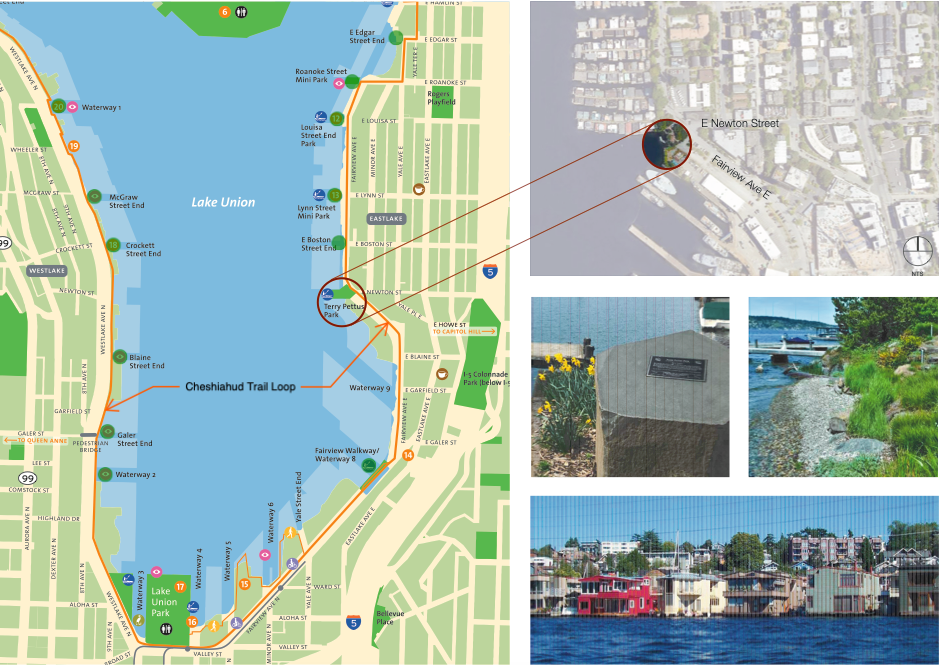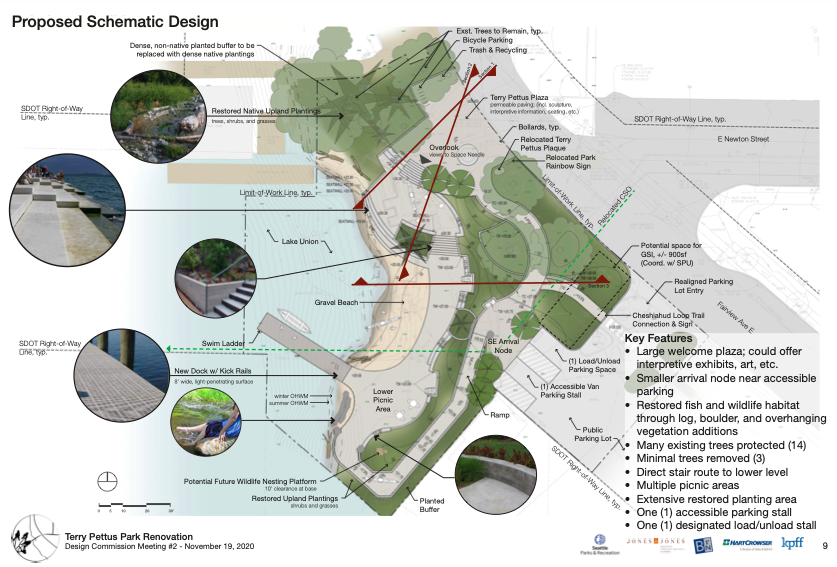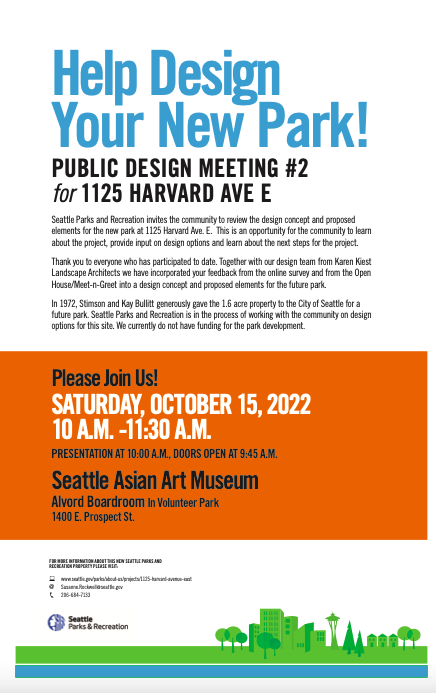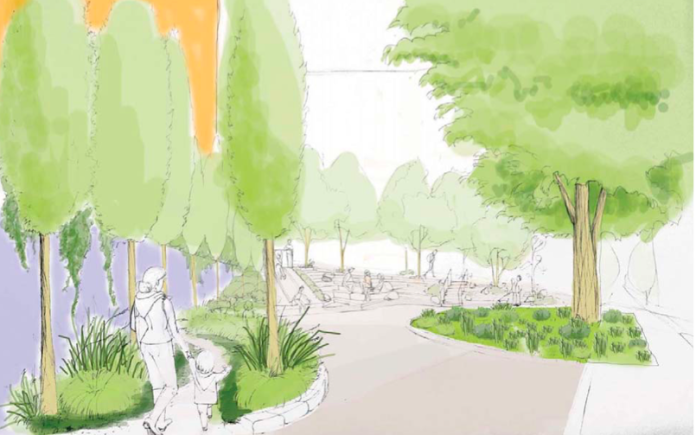
On September 27th, the Seattle City Council, which serves as the Metropolitan Park District Board, passed its funding plan for 2023-2028 in a 8-1 vote, with Councilmember Alex Pedersen (District 4) casting the lone dissenting vote. While a few new amendments were approved before passage, the spending plan as a whole remained very similar to the latest package assembled by Councilmember and Park District Chair Andrew Lewis (District 7). The most notable amendments include funding for the Garfield Superblock in the Central District and two oversight amendments, the first to track performance data related to the controversial Park Ranger program and the second to increase accountability around spending for capital improvement projects.
As mentioned in previous reporting by The Urbanist, Lewis’ spending plan was slightly more expensive than the plan presented by Mayor Bruce Harrell and addressed some community priorities that had come up during public outreach such as increasing equity in parks projects and creating new off-leash areas for dogs. Overall, the spending plan doubles the typical annual Parks District property tax assessment for the median home value from $155 to $343 in the first year, which may leave some Seattleites wondering what they will receive in return. From year-long access to all park bathrooms, to climate resilient updates to community centers, there are a lot of changes headed to Seattle’s parks. One of the most exciting developments, however, is the new parks that will be created as a result of the plan.
In total, the funding plan will pay to fully develop four new parks and fund Phase 1 development, which encompasses community outreach and design planning, of two additional parks. Let’s take a tour of these new parks headed to neighborhoods across Seattle.
Fully funded new parks
The new parks that will receive funding as a result of the plan include: Terry Pettus, Lake City Floodplain, Cayton Corner, and Gateway Park North. All of these parks will be located on city owned land that is currently undeveloped or in need of redevelopment.
Terry Pettus Park
Terry Pettus Park in Eastlake will bring a public plaza, picnic area, green stormwater infrastructure, and habitat restoration with native plants on a Lake Union street end site currently equipped with benches and a dock.
Lake City Floodplain Park
The Lake City Floodplain Park will create a new community green space that will support the health of nearby Thorton Creek. Seattle Parks and Recreation, along with partners including King County and Seattle Public Utilities have been conducting community outreach on plans for the site, including an online open house with opportunities to provide feedback. According to the project timeline, a design proposal is supposed to be shared with the public this fall.
To raise awareness about this site and its important ecological features, the City of Seattle created a video tour. The tour also highlights some of the environmental restoration work that will need to be undertaken during the park’s development. The park site is just north of NE 125th Street, a busy arterial street with a wide center turn lane and unprotected gutter bike lanes. Improving street crossings and making the street a safe “complete street” could ultimately prove key to the park’s success and accessibility.
Cayton Corner Park
Located in the Central District at 19th Street and Madison near the Hearing, Speech, and Deaf Center, Cayton Corner will be a pocket park on a site identified by the community as a priority for park space. Plans to build a park on the site date back to 2013 when a Neighborhood Matching Fund Award was used to create a schematic design for the future park. The infusion of funds from the Seattle Parks District levy will finally allow for bidding and construction of the park to take place. Planned features include walking paths, seating, and landscaping.
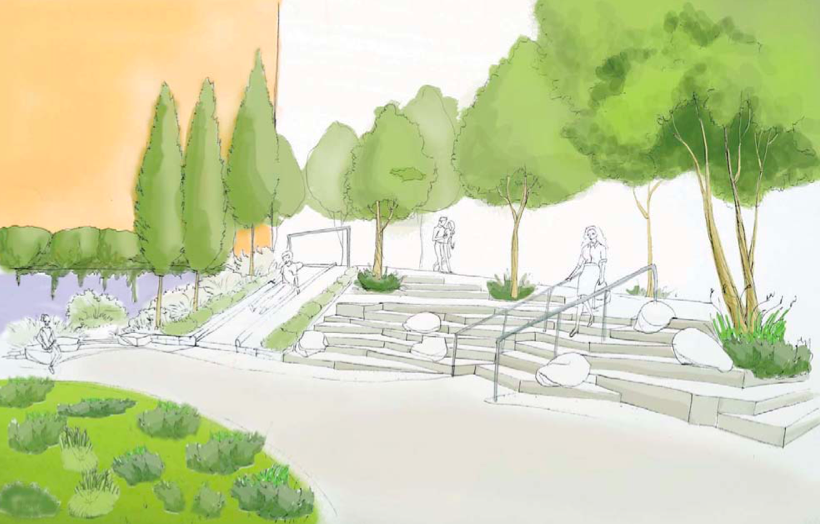
Gateway Park North
Another street end being transformed into a park, Gateway Park North is located along the Duwamish River near the historic Georgetown Steam Plant. This park is one of the 10 sites identified in the Georgetown Open Space Vision Network which was created to address environmental and health concerns in the historically industrial neighborhood.
Georgetown has 30% less open space and 70% less tree canopy than the citywide average. King County, the Environmental Protection Agency, and other entities have acknowledged environmental justice concerns in this underserved community.
Residents in the neighborhood have a life expectancy 13 years shorter than the average county resident. Georgetown particularly needs public green space to mitigate the effects of air, noise, and water pollution and improve the quality of life for community members.
From Executive Summary of the Georgetown Open Space Vision Network (Credit: Seattle Parks Foundation)
According to the Seattle Parks Foundation page, the current park design includes “anti-erosion native plants, installing demonstration rain gardens, placing benches or tables next to an educational kiosk near the entrance, river bank stabilization, and historical information about a renovated pump station.” A former 10% design plan shows the site context of the park, which is adjacent to waste management sites.
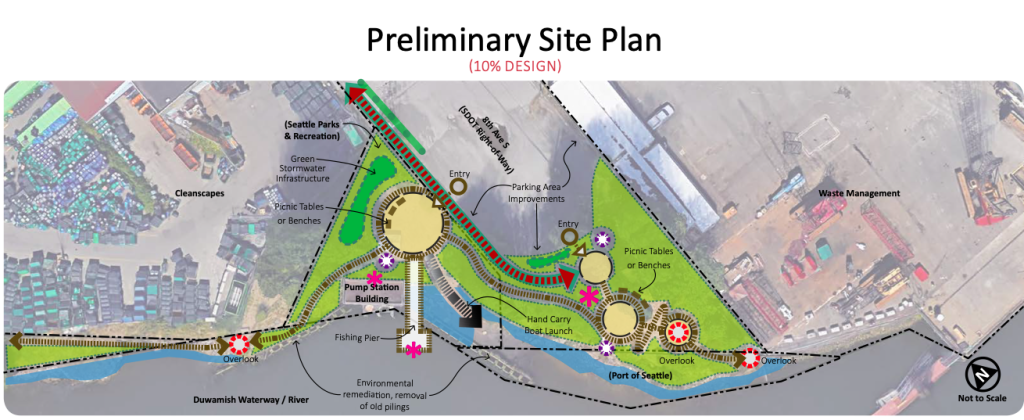
Phase 1 funded new parks
While the Park District spending plan will not fully fund the creation of the Bitter Lake Reservoir Park in North Seattle and 1125 Harvard Avenue East Park in Capitol Hill, it will cover Phase 1 development expenses. Because the Park District funding under the new spending plan is expected cover only about a third of park spending in Seattle, the City budget may offer another funding source to bring these parks to completion. Grants, awards, and private philanthropy remain possibilities as well.
Bitter Lake Reservoir
While community open space, including some fun features like an ADA accessible playground, p-patch, and outdoor fitness area, already exist near the Bitter Lake Reservoir in North Seattle, funding from the Park District will help create a vision for transforming the land, which is mostly open lawn, into a more active park site.
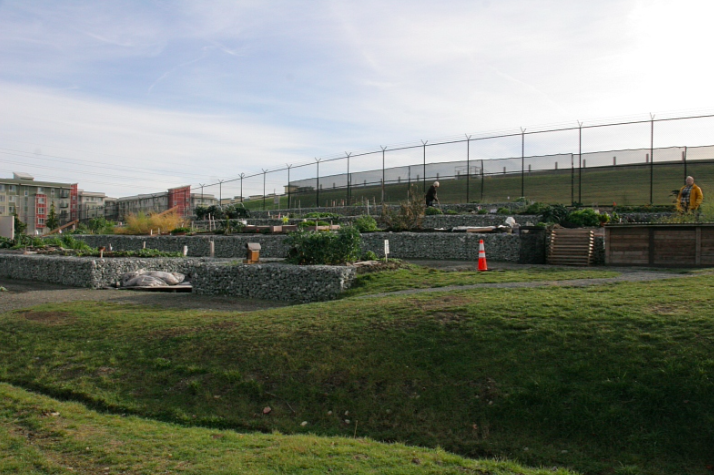
1125 Harvard Avenue East Park
Of all the new parks headed to Seattle, the 1125 Harvard Avenue East Park likely has the longest history. The 1.6-acre site was given to the City of Seattle by Charles Stimson and Katherine (Kay) Bullitt in 1972 for use as a future park, however, it remain privately held until Kay, who lived in the house located on the property, passed away passed away in August of 2021. Prior to being owned by the Bullitts (Bullitt Foundation), the land was held by two influential Seattle families: the Henry family (Henry Art Gallery, University of Washington) and the Bloedel Family (Bloedel Reserve on Bainbridge Island). Located four blocks west of Volunteer Park, the property almost ended up being the location of Capitol Hill’s public library. Instead that library branch ended up being sited farther to the south on Republican Street.
The property also includes an A-frame house designed by Seattle architect Frank Bassetti that will have to be integrated into the new park. The land is currently a private yard and garden, and Seattle Parks and Recreation is undertaking a community outreach process on design options for the future park. The first session was held this past summer and the next is planned for October 15th. The nonprofit Plant Amnesty has been developing a garden, named after the founder of the organization Cass Turnbull, for many years on the property with Kay Bullitt’s permission.
A lot of work remains to make this new park vision a reality, including deciding on a name for it. To answer some questions about the future park and planning process, Seattle Parks and Recreation created an FAQ.
Natalie Bicknell Argerious (she/her) is a reporter and podcast host at The Urbanist. She previously served as managing editor. A passionate urban explorer since childhood, she loves learning how to make cities more inclusive, vibrant, and environmentally resilient. You can often find her wandering around Seattle's Central District and Capitol Hill with her dogs and cat. Email her at natalie [at] theurbanist [dot] org.

